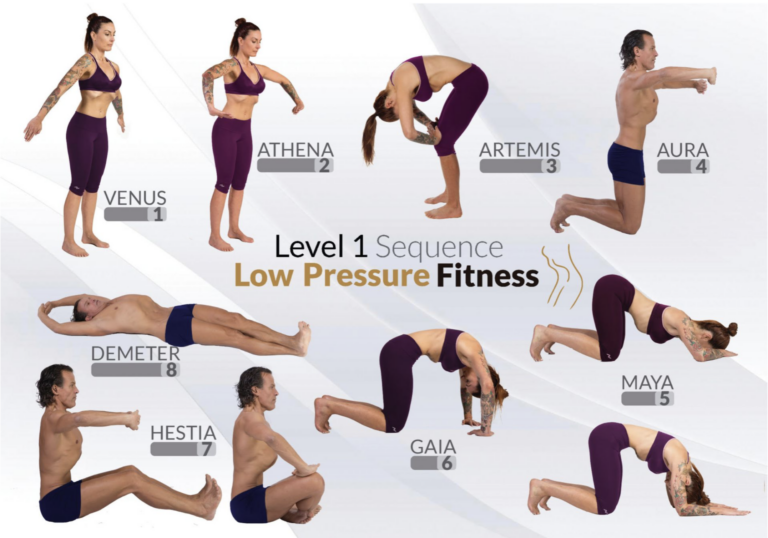What is the low pressure fitness stomach vacuum
The abdominal vacuum is an important aspect of low-pressure fitness. It optimizes reduced intra-abdominal pressure, lifts the intra-abdominal organs, and activates the pelvic floor and deep core muscles. The abdominal vacuum has been around the world of bodybuilding since the days of Arnod Schwarzenegger and is making a comeback in the fitness world today. In this post, I will define and describe the abdominal vacuum and the proper way to do it.

What is the low pressure fitness abdominal vacuum?
The term “abdominal vacuum” comes from the idea of an actual vacuum. The abdominal vacuum creates a suctioning effect inside the intra-abdominal cavity. This is not a “sucking in” of the stomach, but rather a use of negative pressure created. The combination of posture, breathing, and apnea (breath hold) creates this pressure.
Basic Low Pressure Fitness Terms and terms used in this post:
- Hypopressive- less pressure
- Abdominal vacuum- a technique performed by fully releasing the air, holding the breath, and expanding the ribcage
- Decompression breathing- laterocostal breathing that naturally decreases pressure and decompresses the spine
- Lateral-costal breathing- breathing in and expanding the rib cage
- Abdominal cavity- the space in the abdomen between the pelvic floor and the respiratory diaphragm
- Abdominal organs- The organs inside of the abdominal cavity (intestines, bladder, uterus for women, rectum, and more)
- Intra-abdominal- inside the abdomen
What is the benefit of the abdominal vacuum?
The benefit of the abdominal vacuum is the amazing pressure-less effect created in the abdominal cavity. If you think about it, most of the activities we do in our day increase this pressure. The intra-abdominal pressure is increased anytime we lift something, if we hold our breath (even unknowingly), when we strain to have a bowel movement, carry groceries, carry children, do resistance training workouts, you name it. There are very few ways to reduce this pressure.
how the abdominal vacuum works
The abdominal vacuum is done at the end of a round of hypopressive breathing. Hyporessive breathing is the type of breathing performed throughout a low pressure fitness workout, and should be the type of breathing we do when we are upright. It typically goes like this:
- Slow inhale through the nose for 4 seconds, expanding the rib cage in a 360 degree direction
- Slow, 8-second exhale through the mouth, growing through the crown of the head
- After three rounds of breathing, release all of the air, hold the breath, and expand the ribcage (like you are taking another breath in, but no air comes in)
This will create the abdominal vacuum, which creates a suctioning effect in the intra-abdominal cavity, which lifts the abdominal organs up, narrows the waist, and decompresses the spine.
The abdominal vacuum looks like this:
- Long narrow abdomen
- Flaring of the rib cage
- Done in specific poses of a low pressure fitness flow
Keep in mind, the abdominal vacuum is best done in conjunction with specific postures and poses in a low pressure fitness flow. To try out a low pressure fitness flow, check out my youtube channel below.








